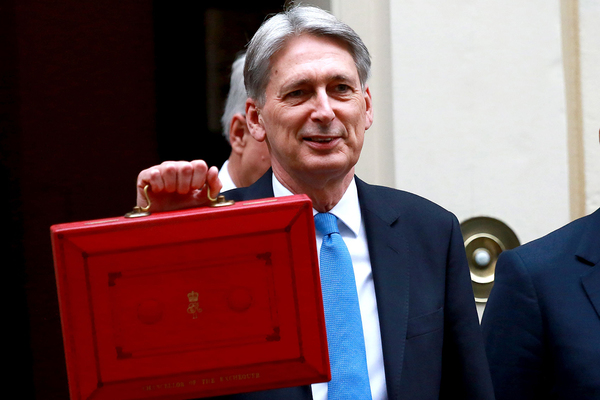You are viewing 1 of your 1 free articles
It's a match: what strategic partnerships are and how they work
Large housing associations are rediscovering their love for government grant. Jack Simpson finds out why ‘strategic partnerships’ are prompting them to renew their vows
The relationship between large housing associations and government grant programmes hasn’t been especially loving in recent years.
A combination of low grant rates, high levels of state control, dissatisfaction with the affordable rent regime, tight deadlines and an ability to self-fund through cross-subsidy means the 2010s have been defined by a declining appetite for grants among the big players.
But over the past nine months, the tide has turned: the biggest associations are signing up again to government programmes at a scale not seen for years. The reason? Instead of old-style grant, organisations have been swiping right to new ‘partnerships’.
Rather than contractual schemes that pay out for specific homes built, partnerships provide a cash injection for an entire development programme.
The success means strategic partnerships, as they are known, probably represent the future basis of grant programmes.
"Rather than contractual schemes that pay out for specific homes built, partnerships provide a cash injection for an entire development programme"
Here, we look at the Homes England version of these schemes: how they were developed and how they work.
The second cohort of strategic partners was announced at the end of last month. Seven new deals were revealed, totalling £653m in grant and forming the only major housing giveaway in the Budget. This took the amount of money committed to partnership deals by Homes England to just over £1.2bn, with the 14 recipients pledging to use the cash to provide an additional 27,755 affordable housing starts by March 2022.
So how has this come about? Years of calls from the sector for longer-term funding got a major boost in January when the Homes and Communities Agency was relaunched as Homes England, and Nick Walkley, its chief executive, set out an ambition to work with the sector differently.
In an interview with Inside Housing, he pledged to remove the “parent and child relationship” between government and housing associations and create longer-term partnerships.
There was already a model from which to work. Sadiq Khan, the mayor of London, launched a strategic partnership scheme in 2016, which has seen eight London housing associations given £400m grant on the basis that 60% of their development programmes would be affordable homes.
But Jackie Jacob, general manager for affordable housing programmes at Homes England, differentiates between the two. “We were aware of the G15 approach in striking deals, but we wanted to get around the table with partners to understand how we could work with them,” she says.
These discussions opened in early spring, with Homes England scheduling a series of round tables involving 90 different housing associations.
The response was clear, Ms Jacob says.
Associations were looking for a ‘whole programme’ approach – longer grant certainty, more flexibility on tenure and freedom to move flexibly when opportunities arose – rather than having to apply for specific grant for specific schemes. It was not the first time associations had taken this message to government, but this time, the response was different.
“I suppose at the meetings, we all thought: ‘Yeah, yeah, we have heard this all before,’” says Mark Henderson, chief executive of Home Group, which secured £85m for 2,400 homes in the first wave of deals. “But they came back to us the next day and said: ‘If you are interested, put a bid in in the next couple of weeks.’”
Within weeks, the first wave of housing associations interested in the model submitted their plans.
So how was this new model going to work? Unlike the current ‘continuous market engagement’ used under the Shared Ownership and Affordable Homes Programme (SOAHP), where grant is released project by project and rules about the mixture of tenure and location are tight, strategic partners will have more flexibility.
“To have the flexibility to just say: ‘These are the homes we can deliver for this much money,’ means we can be quite agile at responding to opportunities when they come up," jonathan Layzell, Stonewater
Instead, associations will state how many houses they will start over a five-year period and how much they estimate they will need to do so, as well as provide an indicative pipeline of tenure and location; after that, however, the rest will largely be up to them.
Jonathan Layzell, executive director of development at Stonewater, which in partnership with Guinness Partnership secured grant of £224m from the deals announced at the Budget, says: “To have the flexibility to just say: ‘These are the homes we can deliver for this much money,’ means we can be quite agile at responding to opportunities when they come up.”
Obligations are based around a full five-year programme of work, rather than each individual project. Housing associations are expected to provide at least 1,000 new homes by March 2022, increase housing starts by at least 25% and – in another major shift from programmes of recent years – include social rent.
Timelines do apply though: houses will have to be started by March 2022 and completed by March 2024. “We expect our partners to crack on,” Ms Jacob says.
Alan Yates, executive commercial director at Accord, a member of the five-strong Midlands-based Matrix Partnership, which secured £77m in the first announcement, says that flexibility around tenure is significant.
Matrix will get the same amount of grant per unit, irrespective of whether its shared ownership or social rent, and can be flexible about the mix of tenure on a project until its completion.
He says: “If you were to build shared ownership and the market collapsed and these were difficult to sell, you could in theory convert them to rent. On the flipside, you might see shared ownership going well and deliver some more.”
This flexibility emboldens associations to take on more risk: Matrix says that it has increased its development pipeline by nearly 250%, from 1,500 to 3,700 homes, as a result. It is a marked contrast to how shared ownership-obsessed George Osborne originally designed SOAHP, refusing to sanction conversions to rent – a major factor in the cool response of bidders.
The funding also encourages associations to tackle bigger and more complex projects, something the top levels of government are keen to see. Mr Layzell says Stonewater is already looking at sites of 150 and 200 homes – far bigger than its current schemes.
He says: “Longer-term funding allows you to take on a site that will take longer to unpick, but can start in 12, 18, 24 months for a good return on homes.”
Under traditional grant programmes, associations identify a scheme and apply for funding from Homes England. They get paid at three specific points: acquisition, start on site and completion of all homes.
Strategic partners, on the other hand, agree a spending profile for the five years at the start of the partnership, and set a chunk of grant and delivery targets for each year. Organisations can then draw down grant every quarter by evidencing the money they have spent on delivering their commitments. However, it isn’t a free-for-all: funding can be removed if those targets aren’t being met.
Ms Jacob says: “It will be a mature relationship and we will work with partners if we identify gaps. But absolutely, at the end of the day, if a partner isn’t delivering, we expect that overall number of homes to be built.”
She says Homes England will regularly monitor housing associations’ delivery and forecasts to ensure they are on track.
Ms Jacob is keen to stress that the programme is not just about grant – it is also about leveraging Homes England’s other capabilities.
She says: “We want partners to use our other levers. This could include loan facilities, cornerstone funding in different areas of our housing supply, market supply and PRS [private rented sector]. We can have discussions around land and putting our land into joint ventures as equity – there is a whole myriad of options.”
Mr Yates says Accord has already begun using Homes England to obtain access to land. It has set up a special project with the organisation and an unnamed landowner with a “significant amount of land” to build on sites that previously have been difficult to develop.
“Homes England can work with us to unlock these sites and bring them forward, which is a benefit to us, the landowner and Homes England,” he says.
Ms Jacob is keen to stress that the programme is not just about grant – it is also about leveraging Homes England’s other capabilities.
Ms Jacob expects to see the activity of its partners pick up over the next six months and says it is up to the partners to show the success of the scheme.
Mr Henderson says Home Group has already started work on sites and approved the recruitment of several development managers last week.
In September, Homes England opened bidding for wave two. The organisation is now in discussions with prospective partners and Inside Housing understands it could announce its choices before Christmas.
There will be more opportunities, too.
It published its five-year strategic plan earlier this month, listing the signing of new strategic partnerships as one of its main priorities for the next few years.
Homes England confirmed to Inside Housing that partners will also be able to see their partnership allocations increased, depending on their performance and the resources being available. It has already started work to try to increase flexibility in its other grant programme in how and when funding can be drawn down.
This new model looks, increasingly, like the future.
A guide to strategic partnerships and the deals announced so far
Under strategic partnerships, housing associations agree to increase their development programmes by a specified number of homes in return for extra funding for the government.
Unlike some other government funding programmes, they can use the new funding flexibly across their development programme, determining the tenure of affordable homes closer to completion following negotiations with Homes England.
The following housing associations were confirmed as strategic partners on 30 January 2019:
| Housing association | Grant | No of additional starts to March 2022 |
|---|---|---|
| Bromford | £66.4m | 1,400 |
| Curo and Swan | £51.1m | 1,067 |
| Liverpool Mutual Homes and Torus | £66.4m | 1,757 |
| Longhurst and Nottingham Community Housing Association | £71.7m | 1,685 |
| Together Housing Group | £53m | 1,152 |
| WHG | £38.7m | 1,000 |
| Yorkshire Housing | £61.8m | 1,300 |
| Your Housing Group | £87.5m | 2,315 |
Homes England announced the following partnerships in October 2018:
| Housing association | Grant | No of additional starts to 31 March 2022 |
|---|---|---|
| Guinness/Stonewater | £224m | 4,500 |
| Optivo | £44.9m | 1,000 |
| Orbit | £128.8m | 2,762 |
| Platform Housing Group | £71.8m | 1,800 |
| Southern Housing Group | £55.1m | 1,005 |
| Thirteen | £40m | 1,000 |
| Vivid | £88.2m | 1,408 |
Table published by Homes England on 31 October 2018
Homes England also earlier this year confirmed the following partnerships:
| Housing association | Grant | No of additional affordable starts to 31 March 2022 |
|---|---|---|
| EMH Group | £30.5m | 748 |
| Great Places | £29.2m | 750 |
| Home Group | £85m | 2,300 |
| Hyde | £95.4m | 1,623 |
| L&Q | £85m | 1,724 |
| Matrix Partnership | £77m | 2,257 |
| Places for People | £74m | 2,603 |
| Sovereign/Liverty | £111.5m | 2,275 |
Table published by Homes England on 3 July 2018














